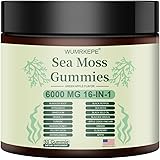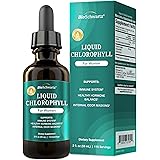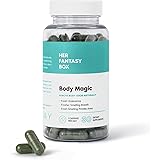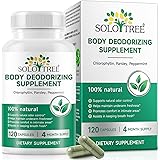Do you ever feel overwhelmed by the sheer volume of “detox” products and programs promising quick fixes for your health? From juice cleanses to extreme diets, the word “detox” has become a buzzword often associated with deprivation. However, as the accompanying video with Sanjana Prasad explains, your body is an incredible, self-detoxing machine, constantly working to eliminate impurities. The real secret to effective detoxification isn’t about harsh measures; it’s about supporting your body’s innate capabilities through a balanced lifestyle, including proper nutrition, adequate sleep, sufficient rest, and consistent yoga practice. This article delves deeper into how a mindful yoga practice, like the one demonstrated in the video, can profoundly enhance your body’s natural cleansing processes, offering a sustainable path to enhanced well-being and improved gut health.
Beyond the Buzzwords: Understanding Your Body’s Natural Detoxification
The concept of “detox” in wellness often gets misrepresented, leading many to believe in quick-fix solutions that can sometimes be more harmful than helpful. True detoxification is an ongoing biological process, not a seasonal event. Your body is equipped with sophisticated systems—primarily the liver, kidneys, digestive system, lungs, and skin—that continuously work to neutralize and eliminate waste products and environmental toxins. For instance, the liver processes everything you ingest, filtering blood and metabolizing chemicals, while the kidneys filter waste from your blood and excrete it through urine. Furthermore, your digestive system plays a crucial role in eliminating undigested food and metabolic byproducts.
Supporting these vital organs requires more than just a temporary cleanse; it demands a holistic approach to daily living. Consistent lifestyle choices, such as a nutrient-rich diet, regular hydration, quality sleep, and stress management, are fundamental. When these systems function optimally, your body naturally maintains a state of balance and purity. Research indicates that chronic stress can significantly impair digestive function, showing how mental well-being is intrinsically linked to physical detoxification. Therefore, embracing a mindful practice like yoga becomes a powerful tool, not for external cleansing, but for internal systemic support.
The Energetic Blueprint: Apana Vayu and Elimination
In the realm of yogic philosophy, the body’s energetic currents, known as *vayus*, play a pivotal role in overall health and vitality. One such vital energy, *Apana Vayu*, is specifically responsible for downward and outward movements within the body, directly governing elimination, reproduction, and the expulsion of waste. This energetic flow is centered in the lower abdomen and pelvic region, making it critically important for maintaining digestive health and the body’s natural detox functions. When *Apana Vayu* is balanced and flowing freely, the processes of digestion and elimination are efficient and regular. Conversely, blockages or imbalances in this vayu can lead to issues like constipation, indigestion, and a general feeling of stagnation.
Many yoga postures are intentionally designed to stimulate and harmonize *Apana Vayu*, thereby enhancing the body’s ability to purify itself. By focusing on postures that compress, twist, and gently stretch the abdominal area, we encourage the movement of toxins and waste materials out of the system. This activation isn’t about forcing the body into an unnatural state; rather, it’s about creating an optimal internal environment where natural processes can thrive. For instance, studies on the benefits of yoga highlight its ability to improve gut motility and reduce symptoms of irritable bowel syndrome, underscoring the physiological impact of stimulating this vital energy. Consequently, a consistent yoga practice becomes a potent ally in fostering a healthy and naturally detoxifying body.
Key Yoga Poses for Supporting Natural Detoxification
The yoga sequence presented in the video is a fantastic compilation of asanas specifically chosen to stimulate the abdominal region, encourage circulation, and support the body’s natural elimination pathways. Each pose contributes uniquely to this process, working synergistically to enhance your overall well-being. Focusing on postures that compress, twist, and lengthen the spine helps to massage internal organs, promote blood flow, and activate the lymphatic system, which is crucial for waste removal. Incorporating these poses into your routine can lead to tangible improvements in digestive comfort and a heightened sense of vitality.
Seated Twists: Massaging Your Internal Organs
The video begins with gentle seated twists, which are an excellent way to initiate the detox process. These twists involve rotating the spine, which creates a natural squeezing and releasing action on the abdominal organs, including the liver, kidneys, and intestines. This action is akin to wringing out a sponge; as you twist, blood flow to these organs is temporarily restricted, and then as you release, a fresh supply of oxygen-rich blood rushes back in. This enhanced circulation aids in the removal of metabolic waste and the delivery of vital nutrients. Furthermore, these poses promote spinal mobility, releasing tension that can often contribute to sluggish digestion.
Tabletop & Cat-Cow Variations: Core Activation and Spinal Health
Moving into the tabletop position, the sequence introduces knee-to-chest movements combined with arched back cat-cow variations. These dynamic movements are powerful for several reasons. Firstly, drawing the knee towards the chest provides direct compression to the lower abdomen, stimulating *Apana Vayu* and encouraging bowel motility. Secondly, the arching and rounding of the spine in cat-cow massages the abdominal organs, improves spinal flexibility, and synchronizes breath with movement. This synchronized breathwork is known to activate the parasympathetic nervous system, promoting relaxation and optimizing digestive functions.
Parivrtta Trikonasana (Revolved Triangle Pose): Deep Detox Twist
The Revolved Triangle Pose is a more intense twisting posture that offers profound benefits for detoxification. This pose involves a deep rotation of the torso, creating significant compression and release in the digestive organs. Unlike seated twists, Parivrtta Trikonasana also engages the leg and core muscles, further enhancing circulation throughout the body. The deep twist can stimulate the pancreas, liver, and kidneys, assisting them in their roles of filtering and processing toxins. Practicing this pose with mindful breath helps to intensify its cleansing effects, promoting not only physical release but also mental clarity.
Malasana (Garland Pose): Grounding for the Pelvic Region
Malasana, or the deep squat, is highlighted in the video as a particularly potent posture for elimination. This pose opens the hips and directly engages the pelvic floor, an area crucial for digestive and excretory functions. Squatting deeply helps to relax the muscles surrounding the colon, facilitating the natural movement of waste through the intestines. The video rightly emphasizes practicing Malasana daily for 30 seconds to a minute, underscoring the cumulative benefits of consistent engagement with this pose. Data shows that regular deep squatting can significantly improve bowel regularity and ease discomfort associated with constipation, validating its importance for natural detox.
Apanasana (Knees-to-Chest Pose): Direct Abdominal Compression
Apanasana, often referred to as the “wind-relieving pose,” is a wonderfully simple yet highly effective posture for stimulating *Apana Vayu* and aiding digestion. Lying on your back and hugging one or both knees into the chest provides direct, sustained compression to the abdomen. This gentle pressure massages the intestines, encourages the release of trapped gas, and helps to move waste material through the digestive tract. The pose’s name itself, derived from “Apana,” clearly indicates its primary purpose in supporting the body’s downward flow. Furthermore, holding Apanasana while focusing on deep belly breaths intensifies its internal massage effect, promoting immediate relief from bloating and discomfort.
Supta Baddha Konasana (Reclined Butterfly): Opening and Relaxing
The sequence concludes with Supta Baddha Konasana, a reclined butterfly pose that is excellent for relaxation and passive hip opening. While less active than the twisting and compressing poses, this posture allows the abdominal organs to relax and settle, promoting gentle circulation. The open hip position can relieve tension in the groin and pelvic area, which indirectly supports the free flow of *Apana Vayu*. Resting in this pose, as suggested in the video, with five deep breaths, encourages deep abdominal breathing. This type of breathing stimulates the vagus nerve, calming the nervous system and further optimizing digestive function, making it a perfect end to a detox-focused practice.
Integrating Yoga for Sustainable Wellness
Embracing a yoga practice for detoxification is not about a quick fix but about adopting a sustainable lifestyle that consistently supports your body’s innate wisdom. The poses demonstrated in the video, when practiced regularly, work synergistically to enhance circulation, stimulate internal organs, and harmonize your body’s energetic systems. Consistency, as Sanjana mentions, is paramount; even a short daily practice of these detox-focused poses can yield significant long-term benefits for your gut health and overall vitality. Furthermore, yoga’s inherent focus on breathwork and mindfulness helps to reduce stress, a major contributor to digestive issues, fostering a calmer internal environment. Therefore, by integrating yoga for detox into your daily routine, you empower your body to maintain optimal function, naturally, and with profound grace.











